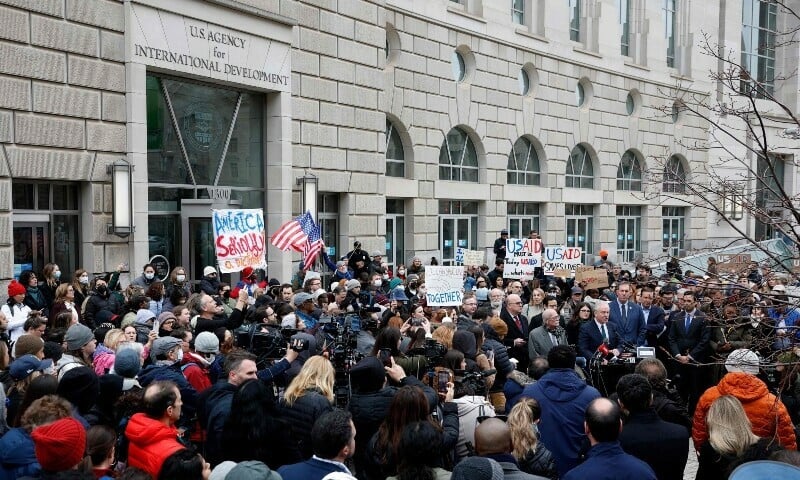
As US President Donald Trump continues to strike blows at the heart of American soft power, stripping away every last fig and vestige of imperial pretence, one can’t help but recall the old adage: “Never interrupt your enemy when he's making a mistake!”
By choosing to disembowel USAID and pull out of global institutions, Trump's Washington seems to prefer a chaotic exit over confronting the inevitable collapse of an ever-more-expensive post-war hegemony – while Europeans still remain on the sinking ship. America First!
With millions of lives on the line and conflict zones growing ever more vulnerable on the soil of its own allies, it hardly comes as a shock that this relic of the Cold War is potentially meeting its end, evoking a sense of 1990s déjà vu.
The newly minted US secretary of state, Marco Rubio, who has been now appointed as the acting administrator of the aid agency, made it clear while admitting that there were many "multi-great powers in different parts of the planet". He also grumbled about how "the postwar global order is not just obsolete; it is now a weapon being used against us".
For decades, traditional leftists – those who once opposed the Iraq War, the Washington Consensus, and rallied against institutions like the IMF, WTO and free trade agreements – have persistently denounced USAID as “humanitarian imperialism”, a vehicle of neo-liberalisation of development.
If one were to be arm-twisted into praising Trump’s touted honesty, the words of his executive order speak for themselves. Issued on his first day back in office, the order temporarily suspends all American foreign aid programs for 90 days, stating that the foreign aid programmes “serve to destabilise world peace by promoting ideas in foreign countries that are directly inverse to harmonious and stable relations internal to and among countries”.
Established in 1961 by President John F. Kennedy under the noble guise of aiding developing nations, USAID was, in many respects, an instrument during the Cold War to counter Soviet influence and keep the “Third World” from crafting its own socio-economic model.
As the developing countries emerged from de-colonisation, the whole aid story served as a convenient alibi for capitalist exploitation, a trick to sweep away any hint that Western powers might have had a hand in the South’s misery.
The agency has supported regimes friendly to US interests, funnelling vast sums to fortify military dictatorships in several countries including Pakistan and Taiwan.
In the 1960s, Afghanistan ranked among the highest per capita recipients of foreign aid. By the late 1980s, however, Peshawar – then the epicentre of US-funded “jihad” in Pakistan – had become home to more transnational NGOs than anywhere else in the world. A textbook example of the shift often described as a transition “from empires to NGOs”.
Take for instance Chile in the early 1970s when behind the scenes, a US-backed coup overthrew the socialist government, setting the stage for a military dictatorship that was as much about imposing neoliberal reforms as it was about quelling dissent.
Even as brutal regimes took hold, Western donors poured cash into local NGOs –groups that, on the surface, championed human rights and social relief. But underneath, these efforts often served to dilute more radical, grassroots movements that threatened the status quo. The double policy later came to be known as Operation Condor, a campaign designed to neutralise leftist challenges across the region.
By the 1990s, as the leftist revolutionary fervour dimmed, US agencies like USAID stepped up their game, funnelling millions into projects ranging from micro development in rural Paraguay to “democracy-building” initiatives in Haiti and Bolivia.
The European Union also joined the fray by launching its own “civilian power” experiments in war-torn Colombia and beyond. The campaigns and covert operations locked in long-term economic ties and secured political influence.
‘Graduate school for the CIA’
On November 3, 1961, USAID was established to manage America’s foreign aid programs. However, its mission was never just to dole out cash. Under President Harry S. Truman, US aid was designed to cut poverty in order to create consumer markets and spread capitalism—a move aimed squarely at undermining socialism and communism.
It wasn’t long before the CIA spotted an opportunity to extend its reach. In 1962, USAID launched its Office of Public Safety to send agents around the world under the guise of “training police officers”.
But as it turned out, the trainers were busy teaching enhanced interrogation techniques—a euphemism for torture. The scandal broke in 1966, and although the office was finally shut down in 1974, the dark practices persisted within military and intelligence circles.
Similarly, during the same period, as historian Bradley Simpson’s research on US military and development aid in 1960s Indonesia reveals, the development, military assistance, and counterinsurgency often blurred together.
Amid Cold War tensions, USAID, the State Department, the CIA and US capitalists – both official and private – actively or tacitly backed the violent purge of Communists and the overthrow of Sukarno in favour of Suharto’s military dictatorship. Simpson notes that aid for domestic police training and military-led rural infrastructure projects “‘fudged the line between counterinsurgency and civic action,’” with USAID and the CIA collaborating on training efforts.
The US soon embarked on an ambitious, if ethically questionable, project: global population control. USAID established its Office of Population, making it clear that poorer nations could only receive aid if they set up population control programmes. This led to the creation of a worldwide network promoting mass sterilisation and abortion.
The fallout was stark as by 1993, USAID’s involvement in Peru’s national health system culminated in the forced sterilisation of roughly 300,000 indigenous women, a policy that only ended in 1998 and left deep, lasting scars on rural communities.
By 1980, USAID Administrator John Gilligan was candid enough to describe the agency as nothing more than a “graduate school for the CIA”. “At one time, many aid field offices were infiltrated from top to bottom with CIA people,” he said. “It was pretty well known in the agency who they were and what they were up to … The idea was to plant operatives in every kind of activity we had overseas, government, volunteer, religious, every kind.”
Father George Cotter, a priest who had collaborated with USAID on several occasions, later dubbed it “the CIA’s little sister”.
In the 1990s, USAID boldly announced that it would help manage Russia’s transition to a market economy, channelling funds through the Harvard Institute for International Development. However, the project soon bogged down amid conflicts of interest and corruption scandals, leading Harvard University to settle a lawsuit with the US government for $26 million.
Meanwhile, in 2005, USAID was busy funding “democracy” seminars in Brazil—a strategy eerily similar to that employed by the National Endowment for Democracy in Hong Kong. While Brazilians eventually clapped back and edged out the foreign interference, Hong Kong’s less politically savvy population would pay the price in the years that followed.
A Harvard study in 2006 revealed a startling trend: nations that held seats on the 15-member UN Security Council received significantly more aid from the US – only to see funding evaporate once their term ended. Critics argued this was a textbook case of “aid for votes,” a charge that USAID steadfastly denied.
Between 2009 and 2012, USAID embarked on a notorious programme designed to trigger regime change in Cuba. The initiative consisted of two prongs: one, the creation of an anti-government digital social network called ZunZuneo; and the other, dispatching CIA agents disguised as aid workers and tourists to stir up anti-government sentiment. In the end, the multi-million-dollar venture fell flat.
By 2012, many nations had caught on to USAID’s true colours. Countries including Russia, Venezuela, Cuba, Ecuador and several Caribbean states moved to bar the organisation from their territories, with Bolivia officially ejecting it in 2013.
In 2014, the Associated Press reported that an Obama administration USAID programme secretly dispatched young Latin Americans to Cuba using the cover of health and civic programs to provoke political change.
The plot thickened in 2016. As the so-called Panama Papers scandal unfolded, it became apparent that the leak had a curious focus on US adversaries like Russia, Syria and China. WikiLeaks later revealed that the journalism group behind the leak was funded by USAID along with entities controlled by billionaire George Soros, infamous for backing anti-Eastern media narratives.
Fast forward to 2024, when it was uncovered that USAID was a major benefactor of BBC Media Action—a “charity” that trains journalists to uphold Western standards of moderation, dismissing the proven success of tighter controls in places like Singapore and China.
Ironically, the BBC's international development charity was founded in 1999, evolving from earlier BBC initiatives, including the 'Marshall Plan of the Mind'—a programme launched in the 1990s to promote "high standards of journalism" in the former Soviet Union and Eastern Europe.
Economic exploitation
In tandem with overt military interventions and political meddling, a quieter and insidious economic exploitation has played out in the name of aid money.
The tools of “informal imperialism” have not only opened markets for American interests but have also locked recipient nations into cycles of dependency.
For instance, at a time when the US and Britain were busy launching an invasion of Iraq, and the Bush administration had just helped unseat Haiti’s progressive leader Jean-Bertrand Aristide while quietly backing a coup against Venezuela’s Hugo Chávez, the West was already on a long streak of heavy-handed meddling that dated back to Eisenhower’s era in the 1950s. However, despite all that, the steady trickle of aid was paraded as the ultimate proof of Western kindness.
It may be recalled here that in 2022, former French ambassador to Haiti, Thierry Burkard, told The New York Times that France and the US had effectively staged a coup against Aristide by pressuring him into exile. Just a year before his overthrow in 2004, Aristide had demanded that France—Haiti’s former coloniser—pay $21 billion in restitution for the 90 million gold francs Haiti was forced to hand over between 1825 and 1947 as compensation for French property, including enslaved people, seized during the Haitian Revolution.
The $128 billion in aid disbursements is indeed on the books. But when set against the massive flow of money moving in the opposite direction, it turns out to be just a drop in the bucket. At the end of 2016, US-based Global Financial Integrity (GFI) and the Centre for Applied Research at the Norwegian School of Economics released eye-opening data.
Unlike earlier studies that only tallied aid, foreign investment and trade flows, their analysis also factored in debt cancellation, remittances and capital flight—the most complete picture of resource transfers between rich and poor nations to date. The findings for 2012 showed that developing countries received a little over $2 trillion from abroad, while roughly $5 trillion flowed out in the same year.
In other words, these countries sent $3 trillion more than they received. Looking back from 1980 onward, the net outflows add up to a staggering $26.5 trillion—roughly equivalent to the combined GDP of the United States and Western Europe.
According to Jason Hickel, an anthropologist and professor at the Autonomous University of Barcelona, a large chunk comes from debt payments. Today, developing countries pay over $200 billion a year in interest to foreign creditors—much of it on decades-old loans that seem to be repaid over and over, and some on debts amassed by greedy dictators. Since 1980, these nations have forked over about $4.2 trillion in interest—a figure that far outstrips the aid they’ve received.
Neoliberalisation
Since its inception, the agency’s ties with the private sector have only grown stronger.
In its early decades, USAID focused on launching programs and building infrastructure abroad to attract foreign investment. This involved “easing trade regulations, offering loan guarantees to businesses, providing scholarships for students to study in the US, and creating agricultural development programs that opened the markets of poor countries to large agribusiness”.
Later, in the early 2000s, USAID shifted gears toward a more hands-on approach with the private sector. Marked by the creation of its Global Development Alliance, the change was touted as “a partnership where USAID and the private sector work together to develop and implement market-based approaches to solve development challenges”.
In practice, this meant USAID now collaborated closely with private firms, awarding multi-million-dollar contracts to US corporations to carry out “development” and aid projects in the Global South.
Serving as an extension of US corporate interests and broader imperial ambitions, the agency sought to break into new markets and generate profits for Western-based corporations.
This involves contracting out humanitarian aid and development projects – often in the wake of a natural disaster or catastrophe – thus opening these countries to foreign capital and fattening the coffers of the US capitalist elite at the expense of local economies. A classic case of the “shock doctrine”.
In fact, 80% of all USAID funding goes to just 75 organisations, while only 6% reaches the recipient countries directly.
Perhaps the most crass and shocking example of this comes from Iraq. Long before the first shots were fired in the 2003 US invasion of Iraq, USAID was already laying the groundwork for post-war reconstruction, inviting bids from corporations eager to cash in on the chaos.
Among the frontrunners was Bechtel, a San Francisco-based construction giant with deep pockets and even deeper connections. Smelling profit in the air, Bechtel’s Senior Vice President Jack Sheehan leveraged his perch on the Defense Policy Board to nudge the Pentagon toward war, all while drumming up public support for the invasion.
Meanwhile, the company and its employees greased the wheels in Washington, pouring $1.3 million into campaign coffers between 1999 and 2002 – an investment that helped ensure lawmakers would vote in its favour when the time came.
The brutal gamble paid off handsomely. USAID handed Bechtel a staggering $1.8 billion in contracts to rebuild Iraq’s gutted infrastructure, from sewage and water systems to electrical grids.
However, as the dust settled, it became clear that Bechtel was more interested in padding its bottom line than in actually fixing what the war had broken. The company drew heavy criticism for mismanagement, delays and shoddy execution – infamously failing to complete a children’s hospital in Basra after running a year behind schedule.
By the time Bechtel packed its bags, it had raked in over a billion dollars in taxpayer money, leaving the country in ruins with unfinished projects.

















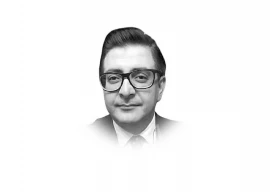
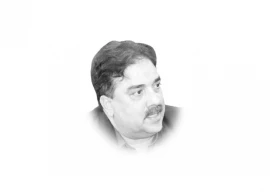
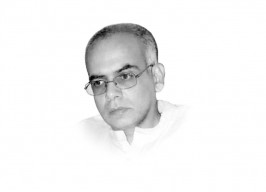
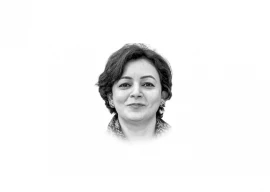
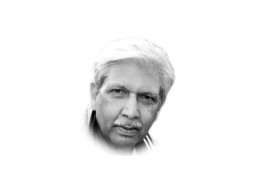
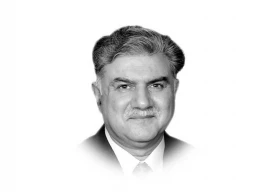
COMMENTS
Comments are moderated and generally will be posted if they are on-topic and not abusive.
For more information, please see our Comments FAQ